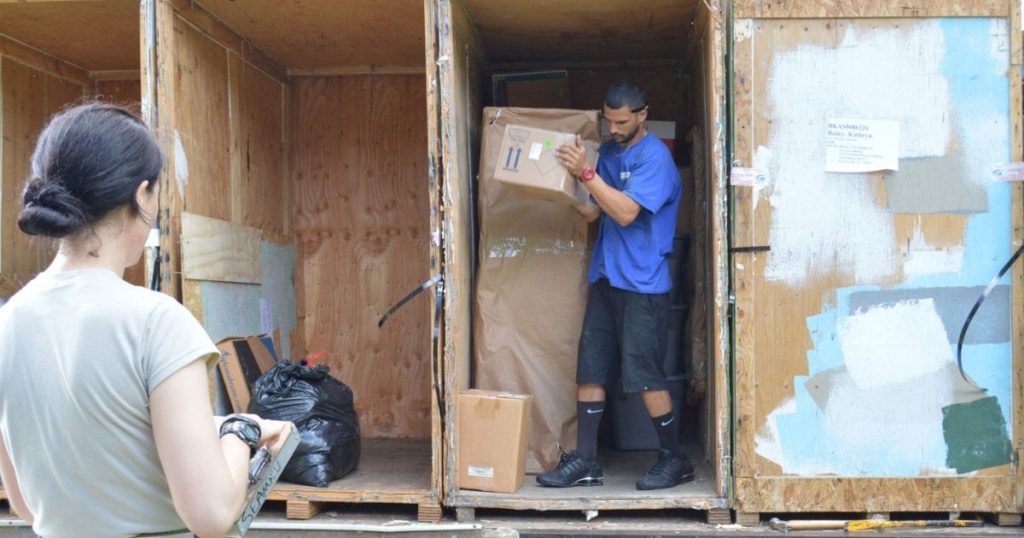One of the most frequently cited stresses in the life of most adults centers around money. For military families on the cusp of a relocation, adding a financial strain to an already exasperating situation isn’t something you should have to worry about. With a little clarity on the process and some advanced planning, having financial stability during a PCS can be manageable.
“But doesn’t the military cover the costs of our moves?” you might ask.
Yes and no.
It is true that most of the logistical aspects of the move are covered. Dislocation allowances, per diems, travel and transportation expenses, lodging, gas, and mileage reimbursement are costs paid by the military. However, most of these expenses are not paid directly to you up front before the move. You must charge them to a government travel card and oftentimes reimbursements come weeks or even months later.
Relocation also has many hidden or unexpected non-reimbursable personal costs that can catch you off guard if you aren’t prepared. It is estimated that service members spend close to $2,000 out of their own pockets every PCS. Ideally, you would have a nice cushion to cover many of these expenses so that financial discomfort isn’t hanging over you when your main focus should be getting your family settled comfortably in a new place.
Aside from what Uncle Sam will cover, what are other overlooked moving-related expenditures that may be on the horizon?
- Vehicle maintenance or repairs in preparation for long-distance travel
- Professional house or carpet cleaning costs
- Airfare or travel expenses if you or your spouse plan a visit to your new location ahead of time to scout out the area
- Down payments or first and last month of rent for securing a home purchase or rental
- Setup of new accounts and utilities in your new home
- Pet deposits
- Purchase or replacement of items that you didn’t need in one home or geographic location but that you may need in your new place, such as lawn equipment, small or large appliances, or home furnishings to fit a new arrangement
- Purchase of cleaning supplies, pantry, and refrigerator staples for restocking new home
- Deposits or registration fees for family members needing special services, child care, educational or sports programming
If all of that sounds overwhelming (and expensive), don’t fret. Here are five tips to help you create a financial plan before your next move.
Determine Your Number
Brainstorm with your partner or a trusted friend to get a good idea of what extra expenses may be pertinent to your situation before you PCS. Make an exhaustive list with realistic amounts for each category for which you’d like to have extra money set aside. Once you have your list of potential expenses, rank them in order of the most likely or necessary to the least. Figure out a total monetary amount that would make you feel comfortable having earmarked for your move.
Factor in Your Timeline
Once you have an idea of how much cash you’d like to have accumulated for your PCS, get a quick grasp on how long you have between now and your move date and work backward. As an example, maybe you would like to save $1,000 and you have four months to do it; that is roughly an extra $250 per month you will need to set aside. If your savings goal is higher or if you have more or less time to save, your intensity will vary.
Sell Some Stuff
One of the best strategies for getting some quick cash is to offload some of your stuff to your neighbors and community before you even start the packing process. One man’s trash is another man’s treasure! Have a real or virtual garage sale. List things on Facebook Marketplace, Nextdoor, or Craigslist. Not only will you lighten your physical load, but you’ll also be turning unwanted and unused items into cash. As you wheel and deal away your castoffs, watch your savings stash grow.
Trim the Fat
After getting an idea of how much you’d like to save, factoring in how much time you have to save it, and getting some quick cash from selling your junk, pinpoint where in your monthly budget you may be able to cut existing expenses. Can you reduce eating out or ordering takeout? Is there wiggle room in your grocery budget to cut back? What about those half-dozen automated monthly subscriptions you aren’t utilizing? Find areas you can to reduce non-essential spending and shift those extra dollars to your moving fund.
Delay Gratification
How can you resist the urge to splurge? One helpful tactic for saving money is to give yourself a cooling-off period between wanting an item and actually purchasing it. Some use the 24- or 72-hour rule, while some will go as long as 30 days before making a significant purchase. Instead of spending on a wanted item, ask yourself, Is there a work-around? Could you use something you already have instead? Can you borrow it from a friend? Buy it secondhand for less money? Or do without it altogether? Sometimes the most obvious way to save money is to simply quit spending it. What can you say “no” to now in order to meet your savings goal?
Moving can be stressful on many fronts. Having a substantial savings fund can help to ease or alleviate money burdens for your family.



